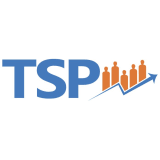This informal CPD article, ‘It’s a match! Attracting Candidates to Teaching’, was provided by Liz Maxwell, Director of Partnerships at Teacher Success Platform, providers of research-based recruitment and development tools. Their school-based simulations help you identify and nurture teachers, mentors, and school leaders so they can succeed.
There is widespread agreement amongst educators and policy makers that we want to attract the ‘best’ people to teaching. Countries such as Finland attract the top third of graduates into teaching, however, this is not the norm in the UK, Australia and the US. How we can make teaching more attractive is still a hotly debated issue, as is, perhaps, the view that ‘top’ performing graduates are the most desirable and suitable teaching candidates.
What is undisputed is the need to attract candidates who have the potential to be effective teachers. A study 1 in the US offers some insights into Gen Z’s perceptions and motivations around teaching and identified opportunities to attract more applicants to the field. It may not surprise anybody that Gen Z are looking for financial security, ongoing support, flexibility, autonomy, collaboration and a sense of purpose.
However, job expectations don’t always align with reality. Many may enter teaching for altruistic reasons, only to leave within five years when they feel their hopes and aspirations were not met. It’s crucial we provide a realistic picture of what teaching is like, including the challenges as well as the rewards. Candidates can only then make an informed decision about whether teaching is right for them or not.
What is a realistic job preview?
Realistic Job Previews (RJPs) can convey an authentic picture of what teaching entails and how potential candidates may ‘fit’ into the role. This is often referred to as Person- environment fit. Person-environment fit is one of the major theories in psychology and describes how people who are well matched to an environment, for example their workplace, demonstrate positive psychological adjustment and performance. In education settings, recent studies2 have shown that teachers who believed their abilities and attitudes closely matched the demands of teaching were less likely to leave the profession.
RJPs provide an honest and transparent approach to hiring. Well-designed RJPs will communicate a balanced view of teaching and help candidates to get a real sense of what being a teacher will be like. RJPs can be used very effectively for attracting candidates before screening and/or interviewing, and they can also communicate something about the organisation’s culture and values. This helps both candidates and organisations decide if there is a good fit so the teacher can thrive in that unique setting. This improves the quality of recruitment but can also increase job satisfaction and may, in fact, reduce teacher turnover.
How can organisations share RJPs with teaching candidates?
An essential decision organisations need to make when deciding to incorporate RJPs into their recruitment, is the method of distribution. Previews can be presented to candidates in multiple ways, for example, in written, oral, video, animated simulations, in person formats and self-assessments. Examples of written RJPs include brochures or pamphlets, whereas spoken can be something as simple as communicating an organisation’s expectations during interview. Video modes, which may include testimonials from current employees, became popular post-pandemic, when travel restrictions meant employers couldn’t bring candidates for in-person interviews. With today’s advancements in technology. video-based RJPs allow candidates to engage with RJPs at anytime, from anywhere in the world, and at any stage of the recruitment process.
RJPs using animated simulations have been successfully adopted to attract potential teaching candidates, with positive correlations made between those who completed this type of RJP and an increased interest in teaching. In person RJPs have traditionally been seen as a ‘briefing’ about the job, whilst self-assessments can help applicants and employers identify areas for development.
How can RJPs be used in an organisation’s recruitment process?
Organisations can combine their RJPs with other assessments to create realistic job assessments. Responses from RJPs can be used to probe responses at follow-up interviews, whilst round table discussions may give candidates a sense of what mentoring/coaching is available and a sense of what their career path could look like. This, coupled with academic measures, gives organisations a more holistic assessment of candidates suitability for teaching.
Final Thoughts
Unrealistic job expectations can result in recruitment and HR challenges. Those who have engaged with RJPs during the recruitment process are perhaps less likely to feel overwhelmed in their early career. RJP’s help potential teaching candidates and education organisations decide if they are indeed a good match.
We hope this article was helpful. For more information from Teacher Success Platform, please visit their CPD Member Directory page. Alternatively, you can go to the CPD Industry Hubs for more articles, courses and events relevant to your Continuing Professional Development requirements.
References:
1 https://www.edsurge.com/news/2024-05-13-what-would-it-take-to-attract-gen-z-to-teaching
2 https://www.sciencedirect.com/topics/psychology/person-environment-fit#:~:text=Person%2Denvironment%20fit%20theory%20focuses,earlier%20discussion%20of%20transactional%20models).
3 https://concept.journals.villanova.edu/index.php/concept/article/view/2772/2707













